A Greener Approach to Lawn Care – Part 1: Pesky Weeds
What is it about lawn? The beautiful, lush lawn with nothing but grass is a relatively new cultural phenomenon. Some people spend hours and countless resources- chemicals, water and equipment maintaining their lawns. While others don’t. As a society, we tend to view a green lawn as a mark of prestige or wealth. People who care about their lawn, take better care of their other assets – right? We have a neighbor who seems to mow his lawn at least 5 times a week. And I shudder to think of the chemical load his grass and soil carry. What does caring for a lawn look like from a greener lifestyle?
A green approach to lawn care is multi-faceted and way too much to tackle in one post. In Brian’s work as a biologist in the Conservation World, the term Integrated Pest Management (IPM) is used to describe how to select the pest control process. We talk about pests as more than just bugs or animals but include weeds, invasive or non-native plants, molds, etc… In this particular series we’re going to be discussing Lawn Care specifically but will include links for many other types of IPM applications.
For us, taking a greener approach to lawn care first started with changing our expectations. I love a lush, green, flawless lawn. That was before our journey to living healthier became a priority. Brian always had a more in-depth knowledge of how the chemicals impacted us and the environment and to be honest, this was a bit of rub when we first got married. I didn’t want 18 inch tall dandelions in my yard and Brian didn’t want the chemicals needed to kill them. Now, we both agree that we don’t want our lawn overtaken with dandelions, thistles, plantains and moss but we’re ok with the lawn not being completely weed free.
Weed control (IPM) without toxic chemicals starts with creating an environment friendlier for the grass so it can compete with the weeds. We’ll be talking about this more in future posts for the series. Today, we’re talking about some creative ways to remove the weeds already there. When we purchased our new house, the lawn was not in great shape. And to be honest, we haven’t been spending the time to get it where we’d like it to be. That being said, we have more dandelions, thistles, plantains and moss than we want. A lot more. This means that simply mowing over them doesn’t really give the grass we do want a chance to compete.
Before we mow, we walk the yard with two goals in mind. The first goal is to remove the dog waste- an absolute necessity with 2 dogs. The second goal is to use a shovel to dig down under the main root system of a weed from the side to cut the roots off. We then lift the weed and pat the sod back down. This works best with thistles because their root system is a “tap root” and easy to grab. They also don’t choke out as much of the grass so there is often no bare patch left behind. The dandelions we have are possibly not even really dandelions, I just haven’t been able to identify them yet. They are huge, with stems at least a quarter inch thick and grow to be 18-24 inches tall. They are a formidable foe to a green lawn! They also have a leaf spread of approximately 8-12 inches very close to the ground. They choke out the grass and when you do dig them out, there is a bare spot left. We’ve also used the Vinegar, Epsom Salt, Dawn mixture on them. This works well if you can spray before the plants get too big. In Western Washington, the many days with rain in late Spring rarely make this possible.
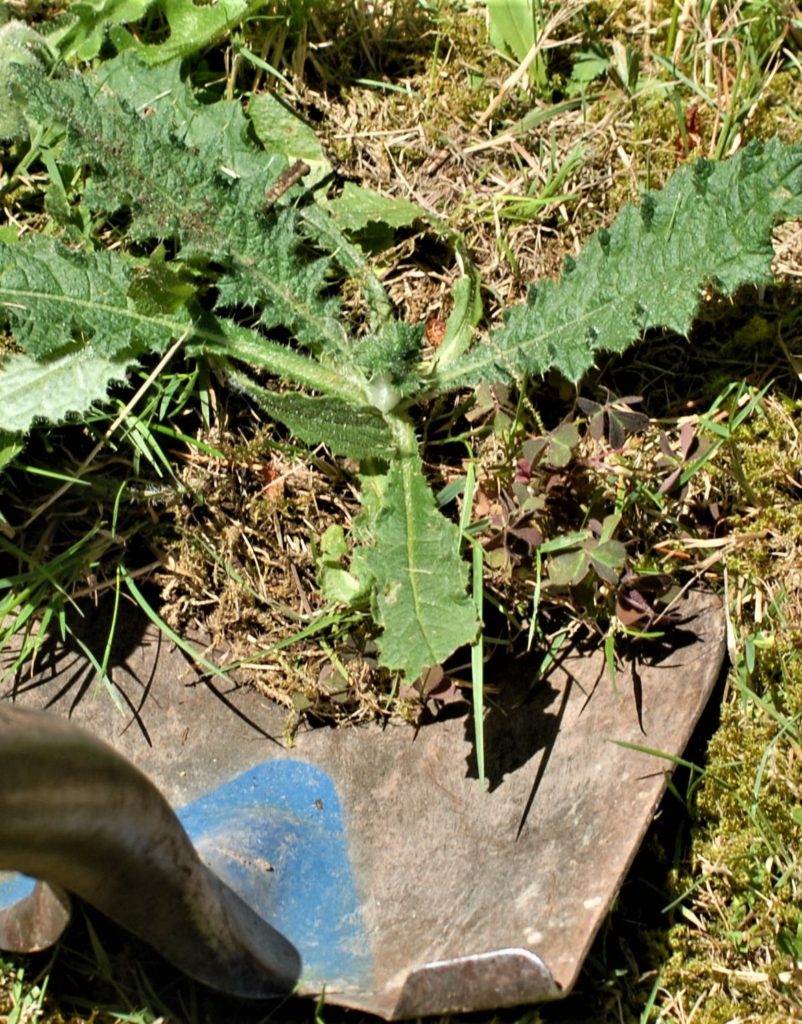
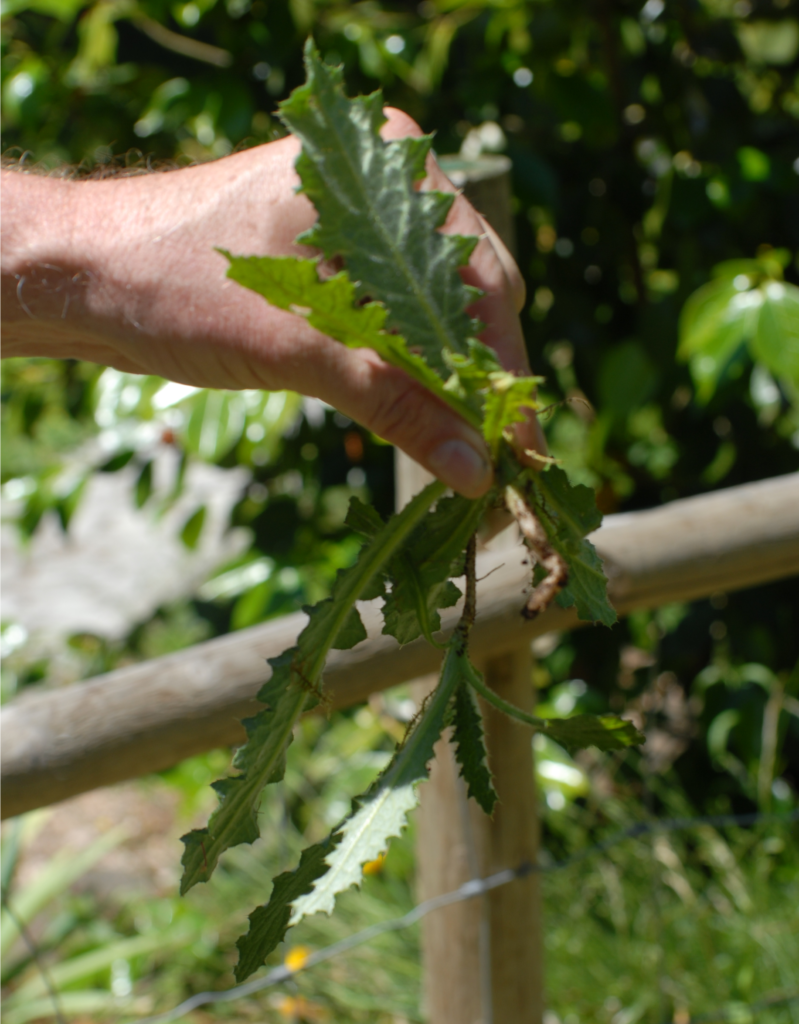
Thistles have a tap root
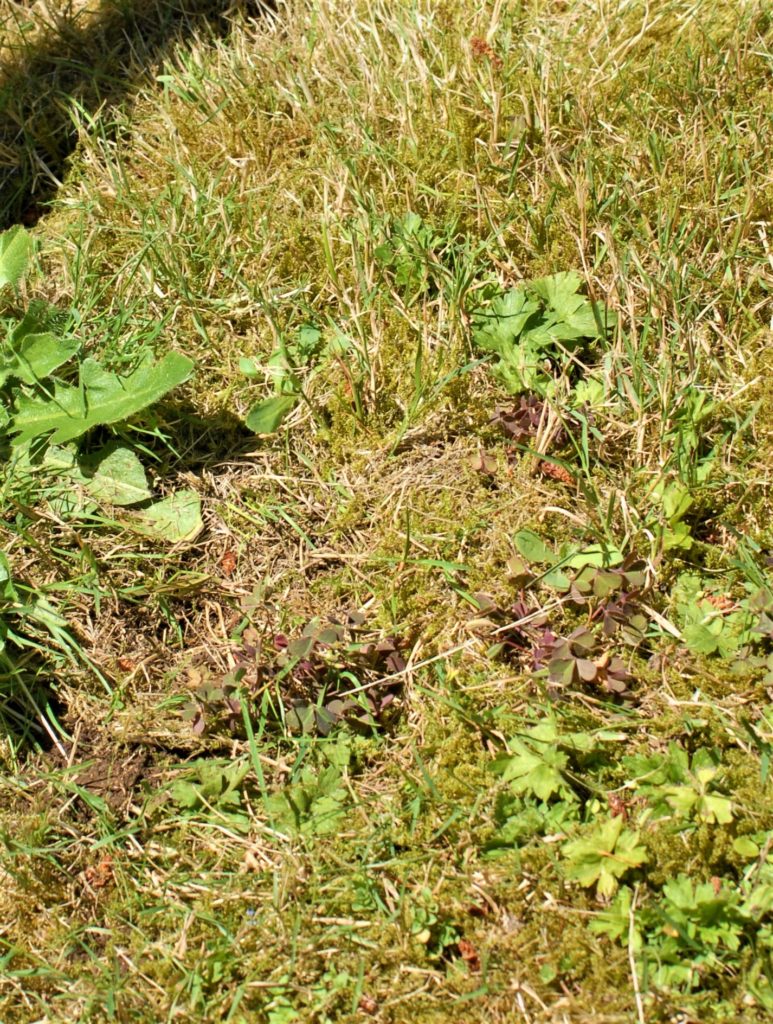
Sod is tamped down where thistle was
We used to pull the plantains as well but after attending the class on Outdoor Pharmacy , I’m “cultivating” them by allowing the plants to grow and just harvesting the larger leaves before the mower passes over them. Part of our journey has been learning about the benefits of plants and changing our perspective on what is good to have in our lawn.
You might ask why we’ve chosen not to use chemicals in our journey to greener. Well, I’ll warn you now, don’t get Brian started on this discussion unless you really want to be fully educated on Storm Water Run-off. Chemicals in storm water are a leading cause of water pollution. If you’d like more information about the impact of storm water run-off on waterways check out our Green News page.
Our journey to living greener has included a personal choice to avoid chemically treating our lawn and finding mechanical methods as part of our IPM plan. For the “weeds” we’re not able to eliminate without chemicals, we choose to enjoy as a plant God has created.
Someday, we may convert our lawn to edible, medicinal plants and not have a “lawn” at all. Or at least a much smaller patch of lawn. We like the idea of native plants, bee friendly landscaping (which grass isn’t) and a diverse ecosystem.How do you control the weeds in your lawn? Have you ever questioned the chemicals our pets, families and the wildlife are being exposed to? In your personal greener journey are weeds more welcome in your yard than they were in the past?
Join our mailing list for updates, recipes, and other tips and tricks for living greener!
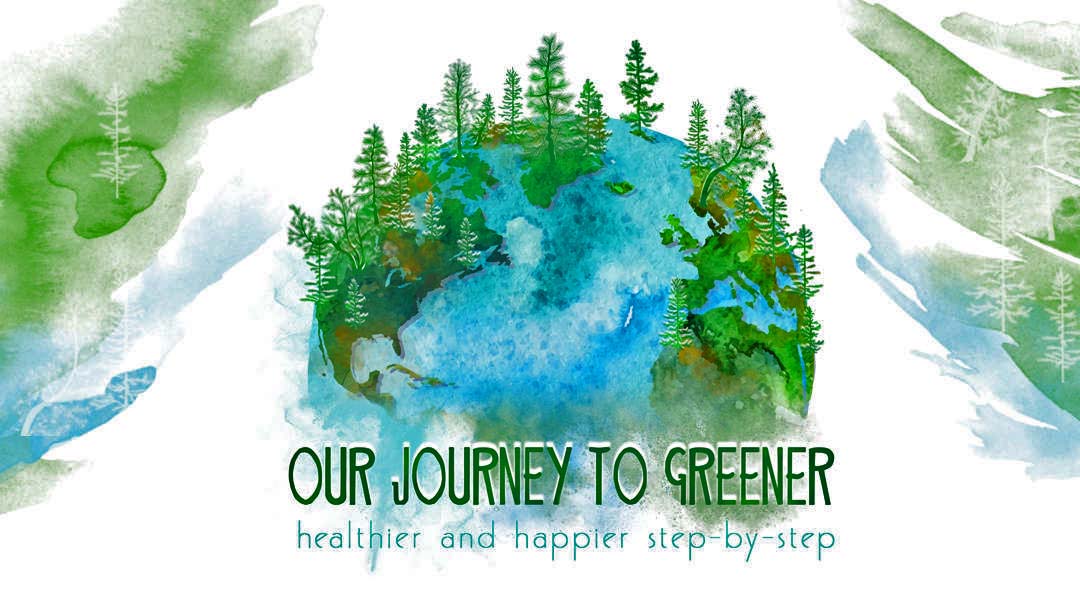

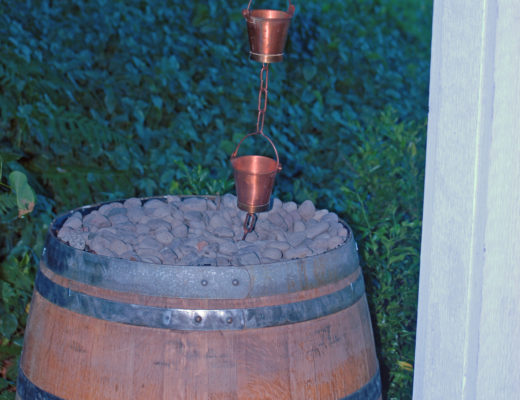

1 Comment
Best weed puller ever especially dandelions. Fishers 34 in. Aluminum Handle and Blade with 4 Claw Weeder